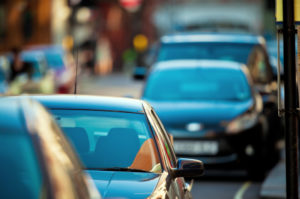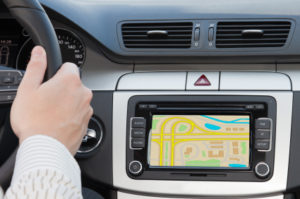How does your auto insurance compare?
Many drivers believe they have great car insurance, only to be proven wrong at the scene of an accident. Here’s the deal — there’s more than one way that your insurer can let you down. Therefore, it’s imperative that you explore every angle to ensure that your coverage will be there for you when you need it the most.
Car insurance is meant to protect your assets and help you fully recover from an accident or other loss. If your coverage isn’t going to do that, then you need to search for coverage that will.
Price is only one factor that you should be considering. If your coverage is lacking at any point, address it with your current provider or find a completely new one.
Remember, you can always begin comparing rates by entering your zip code into our free car insurance comparison tool.
Liability Coverage
The first factor you need to look at is your liability coverage. It is the part of your insurance policy that is mandatory due to state laws. Each state decides the bare amount of coverage that you can purchase, but most of those amounts are well below what would be needed to cover the damages you cause to others in an at-fault crash.
 Looking at your own insurance, would your coverage be enough if you caused an accident involving multiple vehicles and many people? Say for instance that you are driving on the highway and it begins to rain. You are driving at a high rate of speed when you hit a big puddle, and your vehicle hydroplanes, or loses control due to the loss of traction.
Looking at your own insurance, would your coverage be enough if you caused an accident involving multiple vehicles and many people? Say for instance that you are driving on the highway and it begins to rain. You are driving at a high rate of speed when you hit a big puddle, and your vehicle hydroplanes, or loses control due to the loss of traction.
Your vehicle turns sideways and runs into two different vehicles. A third vehicle is hit by one of those vehicles. There are a total of nine people in all of the vehicles that were hit. You are now responsible for the medical bills and repair bills for all of the participants in most cases. And while you might be able to argue that there was a dangerous amount of water on the road, the reality is, you should have slowed down.
The best-case scenario is that no one is hurt. But if everyone involved takes an ambulance ride to the hospital to get checked out, then you are probably looking at around $5,000 per person. If you only have a limit of $25,000 or $30,000 in coverage for medical bills for the entire accident, then your insurance is only going to pay out up to that limit; you will be responsible for the rest.
The average state minimum for injury liability is $50,000 in coverage. An amount that likely won’t cover a serious accident, especially if it causes severe injuries.
Repairs for damages to a vehicle or for the replacement of a vehicle can also be very high. The experts at the Insurance Information Institute not only recommend that you have at least $100,000 in coverage per person and $300,000 in coverage for an entire accident; but that you also should have at least $50,000 to $100,000 in property damage liability.
If your liability insurance levels are nowhere near the recommended limits for such coverage, then you need to increase your amounts. Otherwise, if you cause an accident, then your assets such as your house, your bank account, and your investments could be ordered liquefied to pay for the damages.
 Full Coverage
Full Coverage
The next factor that you should compare is the part of your policy that will make you whole again. If your vehicle is damaged, only full-coverage options such as collision and comprehensive will fix your damages.
Review your coverage, and check to see if your insurance will pay for your vehicle’s repairs if you cause an accident or run into a stationary object. Will your policy cover you if you hit a deer or other wild animal? Will your insurance pay the damages to your vehicle from a hailstorm, a flood, or a fire Furthermore, will your coverage pay you if your car disappears at the hands of a car thief?
If you don’t have collision and comprehensive coverage, then all of the above events will have to be paid for by you alone. Your lender certainly required that you carried such coverage until your loan was paid off, but many will drop the coverage afterward to save money.
There will be precious little money saved if you have to replace or repair your car completely out-of-pocket. In the long run, it is worth the additional costs to your premium to have collision and comprehensive.
If your insurance won’t make you whole again after a crash or other loss, then you need to add full coverage. If you can’t pay for thousands of dollars in repairs or the replacement of your vehicle, then the only smart option is to get full coverage. The only instance where you shouldn’t get full coverage is if your vehicle is worth less than the cost of the coverage and your deductible together.
Free Car Insurance Comparison
Compare Quotes From Top Companies and Save
Secured with SHA-256 Encryption
Uninsured Drivers
Next, you need to evaluate your policy for coverage for uninsured drivers. If an uninsured driver hits your vehicle, then you will likely end up paying for damages.
 Imagine that you were hit by a driver with no insurance. That other driver certainly faces some stiff penalties, but you have damages to your car and injuries resulting in medical bills. If you don’t have coverage for such a scenario, you are facing an uphill battle.
Imagine that you were hit by a driver with no insurance. That other driver certainly faces some stiff penalties, but you have damages to your car and injuries resulting in medical bills. If you don’t have coverage for such a scenario, you are facing an uphill battle.
You can usually sue the at-fault driver, but that likely won’t bring much satisfaction. In the above scenario, you have $3,500 in damages to your vehicle and medical bills that are a modest $1,500. The judge awards you those damages in a trial, but the at-fault driver has no assets and a modest income.
The judge orders the garnishment of the at-fault driver’s wages in the amount of $50 a week. But that rate, it would take 100 weeks for you to get your money, or approximately two years. If this scenario sounds more like a questionable investment opportunity than true justice — well, you’re not far from the truth. In the end, you’ll be the one paying those bills upfront, collecting a measly $50 a week. What would have been even better option was having uninsured motorist insurance coverage from the getgo.
If still you feel unconcerned about uninsured drivers, consider this —
According to the Insurance Research Council, data indicates that the national average of uninsured drivers is one in every seven.
Next time you are on the road, count the closet seven vehicles around you because one of them likely has no coverage at all.
Medical Payments
 Similarly, you also want to compare your insurance coverage to see if it will help you with your medical bills. Medical payments insurance or personal injury protection (PIP) can help you with hospital bills, doctor bills and the like, but only if you have the coverage.
Similarly, you also want to compare your insurance coverage to see if it will help you with your medical bills. Medical payments insurance or personal injury protection (PIP) can help you with hospital bills, doctor bills and the like, but only if you have the coverage.
You may protest your need for such coverage by pointing to your health coverage, but you may be leaving yourself open to financial trouble. Unless your health coverage is the absolute best, you are likely to have co-payments, deductibles and other portions that you have to pay. If you have $20,000 in ER medical bills, and your insurance only pays 80% plus a $500 deductible, you are looking at owing $4,500 for your portion.
We get it. Between the stresses of work and the busyness of home, you already have a lot on your plate. Having to pay out of pocket for unexpected medical bills will only result in more strain on your finances, and on your life. Remember, PIP or medical payments insurance will help to cover your bills. It also helps to cover your passengers who might not have health insurance.
Stability and Ratings
Now that you have compared your coverage, you need to also scrutinize your provider to make sure that they will always be there for you.
It doesn’t matter how much coverage you have if your insurer is teetering on the brink of bankruptcy.
You need to compare your insurance company’s financial ratings among ratings organizations to make sure that your insurer is on firm financial footing. The U.S. Securities & Exchange Commission designates a number of agencies as Nationally Recognized Statistical Rating Organizations. View your company’s ratings and search for a new provider if you find a low rating.
Similarly, you will also want to ensure that your insurer has a good reputation for customer service. The last thing you want after an accident is to fight with your insurance company over your claim. Check ratings from independent agencies such as J.D. Power or Consumer Reports. If you find a high level of complaints, you might want to search for a new provider.
 Cost
Cost
Lastly, you need to compare cost. It should be the last item that you compare, as it is not the most important. Car insurance is meant to protect you; it is not something you want to skimp on. However, no one should be overpaying for coverage.
Get rate quotes with insurers to make sure that you can’t find a better rate elsewhere. Remember that your new insurer must measure up in all the other factors as well as offering a better rate.
Start your search for car insurance quotes right here once you put your ZIP code in the FREE search tool now!
